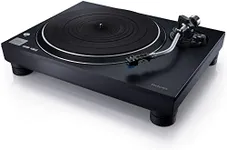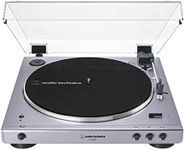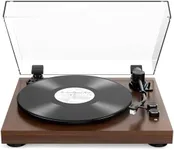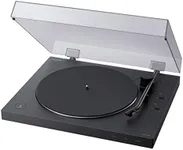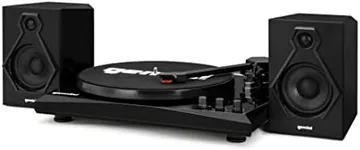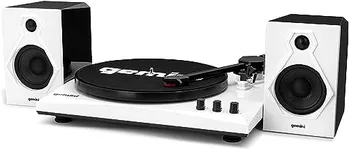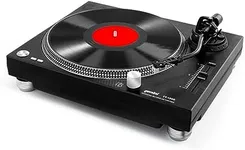Buying Guide for the Best Fully Automatic Turntables
Choosing the right fully automatic turntable can greatly enhance your vinyl listening experience. Fully automatic turntables are designed to make playing records as easy as possible, with features that handle the tonearm and needle placement for you. When selecting a turntable, it's important to consider several key specifications to ensure you get the best fit for your needs. Understanding these specs will help you make an informed decision and enjoy your music to the fullest.Drive TypeThe drive type of a turntable refers to how the platter is spun. There are two main types: belt-drive and direct-drive. Belt-drive turntables use an elastic belt to spin the platter, which helps reduce vibrations and can result in better sound quality. Direct-drive turntables have the motor directly connected to the platter, providing more consistent speed and better torque, which is preferred by DJs. If you are a casual listener who prioritizes sound quality, a belt-drive turntable might be the best choice. If you plan to use the turntable for DJing or need precise speed control, a direct-drive turntable would be more suitable.
Cartridge TypeThe cartridge is the component that holds the needle (stylus) and converts the grooves on the record into an audio signal. There are two main types: moving magnet (MM) and moving coil (MC). MM cartridges are more common, easier to replace, and generally more affordable. They provide good sound quality and are suitable for most listeners. MC cartridges, on the other hand, offer superior sound quality but are more expensive and require a compatible phono preamp. If you are new to vinyl or looking for a good balance of quality and cost, an MM cartridge is a great choice. If you are an audiophile seeking the best possible sound, consider an MC cartridge.
Platter MaterialThe platter is the part of the turntable that the record sits on. Common materials include plastic, aluminum, and acrylic. Plastic platters are lightweight and affordable but may not provide the best sound quality. Aluminum platters are more durable and offer better sound quality due to their weight and stability. Acrylic platters are considered the best for sound quality as they reduce vibrations and static. If you are looking for a budget-friendly option, a plastic platter may suffice. For better sound quality and durability, an aluminum or acrylic platter is recommended.
Tonearm TypeThe tonearm is the part of the turntable that holds the cartridge and needle. There are straight and S-shaped tonearms. Straight tonearms are simpler and often found on entry-level turntables. They are easier to set up and use. S-shaped tonearms are more complex and provide better tracking and sound quality, making them a favorite among audiophiles. If you are a beginner or casual listener, a straight tonearm will be sufficient. If you are looking for higher sound quality and better tracking, an S-shaped tonearm is the way to go.
Built-in PreampA preamp boosts the audio signal from the turntable to a level that can be played through speakers. Some turntables come with a built-in preamp, while others require an external one. A built-in preamp is convenient and simplifies the setup process, making it ideal for beginners or those with limited space. However, external preamps often provide better sound quality and more customization options. If you are new to vinyl or want a simple setup, a turntable with a built-in preamp is a good choice. If you are an audiophile or want more control over your sound, consider a turntable without a built-in preamp and invest in a high-quality external preamp.
Speed OptionsTurntables typically offer different speed settings to accommodate various types of records. The most common speeds are 33 1/3 RPM and 45 RPM, which cover most vinyl records. Some turntables also offer 78 RPM for older records. It's important to choose a turntable that supports the speeds of the records you own. If you primarily listen to modern LPs and singles, a turntable with 33 1/3 and 45 RPM settings will suffice. If you have a collection of older 78 RPM records, make sure to choose a turntable that supports this speed.
